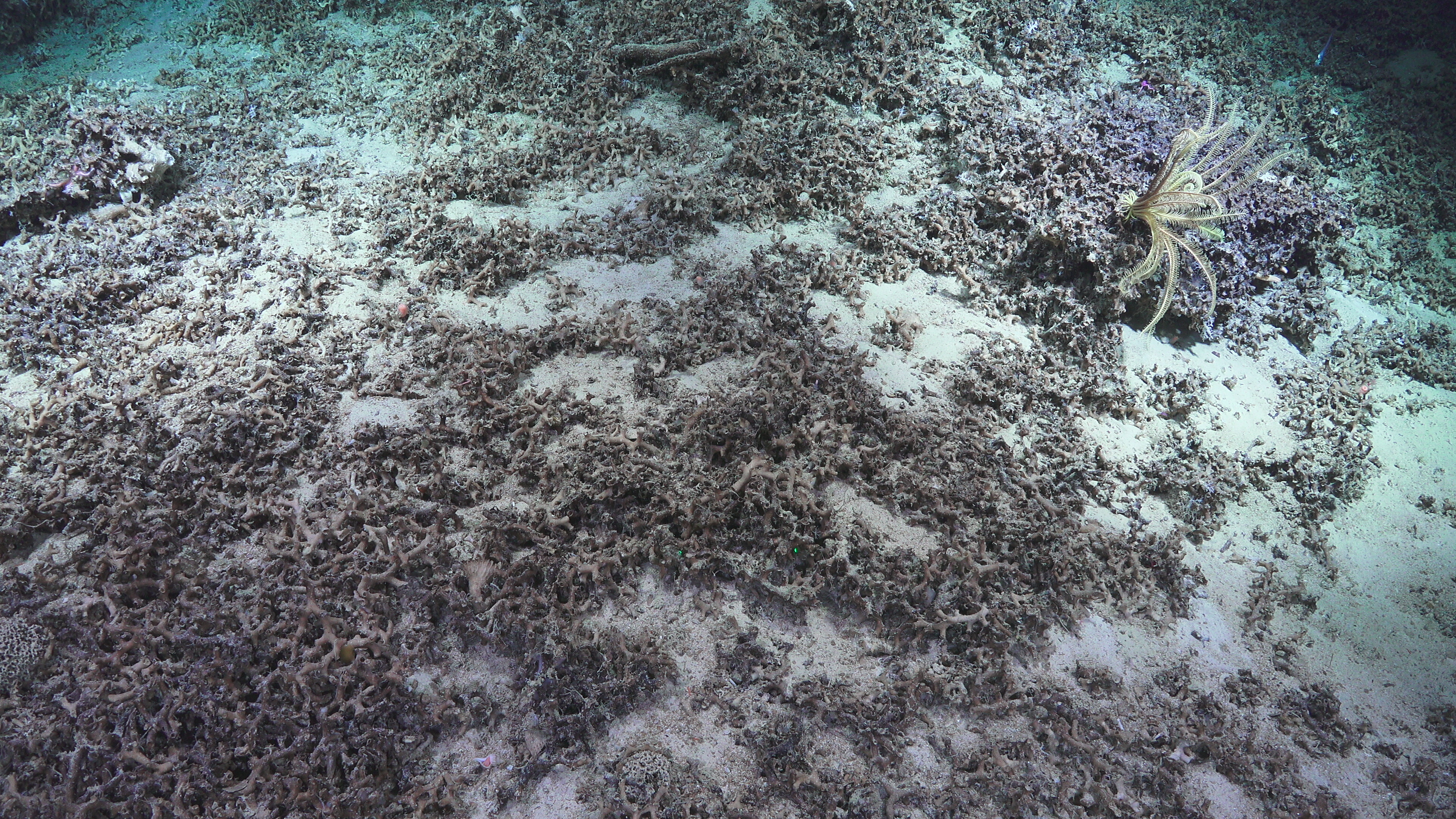'Gardens and graveyards' of coral discovered in hidden canyons off Australia's coast
The fossil coral "graveyards" could reveal new secrets about past climate change.

The South Australian coast is surrounded by a labyrinth of underwater canyons, many of them still unexplored. Last week, an international team of researchers (and their underwater robot companion) completed a survey of three such canyons, uncovering a hidden world of both thriving coral gardens and ash-white coral graveyards.
According to the expedition members, the fate of these hidden ecosystems, which sit in the immediate path of the increasingly warm water flowing out of Antarctica's Southern Ocean, could be a preview of how farther-flung ocean life will react to ongoing global warming.
"This has global implications given these waters originate from around Antarctica [and] feed all of the major oceans and regulate our climate system," expedition member Malcolm McCulloch, of the University of Western Australia, said in a statement.
Related: Giant, weird-looking fish with 'startled eyes' washes up on Aussie beach
In their recent voyage, McCulloch and his colleagues aboard the research vessel R/V Falkor (named for the luck dragon of NeverEnding Story fame) explored the depths of three canyons on the South Australia coast — Bremer, Leeuwin and Perth canyons — descending for the first time into each area's abyssal zone, or the dark depths roughly 2.5 miles (4,000 meters) below the surface.
Related: In Photos: Sea Life Thrives at Otherworldly Hydrothermal Vent System
Beyond the obvious reason for such exploration (hidden worlds are awesome), scientists are interested in these submarine crannies because they sit on the front lines of oceanic climate change. Facing the Southern Ocean — the ocean that surrounds Antarctica and connects the Atlantic, Pacific and Indian oceans with its clockwise-flowing current — these canyons are some of the first ecosystems on Earth to encounter the warming waters surging out of Antarctica's ocean.
Get the world’s most fascinating discoveries delivered straight to your inbox.
Thanks to a mechanism called the Antarctic convergence (in which cold water flowing north clashes with warmer, south-flowing water), the currents leaving the Southern Ocean are remarkably rich in nutrients. That makes the submarine canyons of South Australia a hotspot for migrating animals. Bremer Canyon, for example, is home to the Southern Hemisphere's largest seasonal gathering of killer whales and often hosts traveling sharks, dolphins, squids and birds, the researchers said.
During their latest expedition, the crew of the Falkor learned that these canyons are bustling with life deep underwater. Each spot hosted lush gardens of coral, rich with marine life and bursting with color. However, each canyon (especially Leeuwin) also contained extensive pockets of dead and fossilized coral. According to the researchers, these corals bear the record of both recent, anthropogenic ocean warming, as well as longer-term changes to the world's climate. It's not clear yet what killed the coral in a given canyon, but researchers will begin answering that question as soon as Falkor returns to land.
This voyage was funded by the nonprofit Schmidt Ocean Institute, and the team's newest research has yet to appear in a peer-reviewed journal.
- Images of melt: Earth's vanishing ice
- The reality of climate change: 10 myths busted
- Top 10 ways to destroy Earth
Originally published on Live Science.
OFFER: Save at least 53% with our latest magazine deal!
With impressive cutaway illustrations that show how things function, and mindblowing photography of the world’s most inspiring spectacles, How It Works represents the pinnacle of engaging, factual fun for a mainstream audience keen to keep up with the latest tech and the most impressive phenomena on the planet and beyond. Written and presented in a style that makes even the most complex subjects interesting and easy to understand, How It Works is enjoyed by readers of all ages.

Brandon is the space / physics editor at Live Science. With more than 20 years of editorial experience, his writing has appeared in The Washington Post, Reader's Digest, CBS.com, the Richard Dawkins Foundation website and other outlets. He holds a bachelor's degree in creative writing from the University of Arizona, with minors in journalism and media arts. His interests include black holes, asteroids and comets, and the search for extraterrestrial life.




